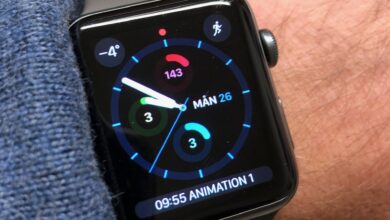Google Meet Can’t Share Screen: Issues, Troubleshooting

Screen sharing is a fundamental feature in virtual communication platforms, enhancing collaborative efforts and presentations. However, users encountering the issue of Google Meet’s inability to share screens might find themselves grappling with an obstacle that impedes seamless online interactions. This glitch not only disrupts the flow of presentations but also hinders the ability to effectively convey information in virtual meetings, underscoring the importance of addressing and resolving this challenge for a smoother and more productive online collaboration experience.
Google Meet Screen Sharing Issues
Google Meet has become an essential tool for virtual collaboration, but users occasionally encounter challenges with screen sharing functionality. Understanding and addressing these issues is crucial for a seamless online meeting experience.
Common Screen Sharing Issues:
- Black Screen During Sharing:
- Possible causes: Browser extensions, GPU acceleration, or outdated browser versions.
- Solutions: Disable extensions, update browsers, and ensure GPU drivers are up-to-date.
- Low Quality or Laggy Screenshare:
- Potential causes: Slow internet connection or excessive background processes.
- Solutions: Upgrade internet speed, close unnecessary applications, and prioritize video conferencing resources.
- Screen Sharing Not Working at All:
- Probable causes: Browser permissions, conflicting software, or outdated Meet application.
- Solutions: Grant necessary browser permissions, disable conflicting applications, and update the Google Meet app.
- Audio or Video Distortion While Sharing:
- Causes: Poor bandwidth, incompatible devices, or outdated drivers.
- Solutions: Optimize internet bandwidth, use compatible devices, and update audio/video drivers.
- Inability to Share Specific Application Window:
- Causes: Browser settings, incompatible applications, or limited permissions.
- Solutions: Adjust browser settings, close conflicting applications, and grant necessary permissions.
Tips for Improved Screen Sharing:
- Use a Supported Browser:
- Google Meet works optimally with Chrome, Firefox, Safari, or Edge. Ensure your browser is up-to-date.
- Check Network Connection:
- A stable internet connection is essential for smooth screen sharing. Run a speed test to ensure sufficient bandwidth.
- Update Operating System:
- Ensure your operating system is updated to the latest version, as outdated systems may cause compatibility issues.
- Test Before Meetings:
- Conduct a pre-meeting test to identify and resolve any screen sharing issues before they impact the actual meeting.
Troubleshooting Google Meet Screen Sharing
| Issue | Possible Solution |
|---|---|
| 1. Screen Sharing Button Missing | Ensure you are using the latest version of Google Chrome. If the issue persists, try restarting your browser or clearing its cache. |
| 2. Incorrect Screen Sharing Permissions | Verify that Google Meet has the necessary permissions to access your screen. Check browser settings and security software that may restrict screen sharing. |
| 3. Incompatible Browser or Device | Google Meet screen sharing works best on Google Chrome. If you’re using a different browser, switch to Chrome or update it to the latest version. Also, ensure your device and operating system are compatible. |
| 4. Software Conflicts | Disable browser extensions and third-party applications that might interfere with screen sharing. Test in incognito mode to rule out extension conflicts. |
| 5. Network Issues | Check your internet connection for stability. A slow or unreliable connection can affect screen sharing quality. Consider using a wired connection instead of Wi-Fi. |
| 6. Google Meet Update | Confirm that you are using the latest version of Google Meet. Outdated versions may have bugs or compatibility issues. |
| 7. Graphics Driver Update | Update your graphics drivers to the latest version. Outdated drivers can lead to screen sharing problems. |
| 8. Firewall and Antivirus Settings | Adjust firewall and antivirus settings to allow Google Meet to function properly. Temporarily disable them to check if they are causing the issue. |
| 9. Clear Browser Cookies | Clearing browser cookies can resolve unexpected behavior. After clearing cookies, restart your browser and try screen sharing again. |
| 10. User Permissions in Meet | Ensure that the meeting organizer has granted participants the necessary permissions to share their screens. Check the meeting settings for restrictions. |
Google Meet Unable to Share Screen
Google Meet is a widely used platform for virtual meetings and collaborations, offering a range of features to enhance remote communication. However, users may encounter occasional issues, such as being unable to share their screen during a meeting. This can be a frustrating obstacle, but fortunately, there are several troubleshooting steps you can take to address this issue.
- Check Browser Compatibility: Ensure that you are using a supported web browser. Google Meet is optimized for Google Chrome, Mozilla Firefox, Microsoft Edge, and Safari. Using an up-to-date version of these browsers can significantly improve screen sharing functionality.
- Grant Necessary Permissions: Confirm that Google Meet has the necessary permissions to access your camera and microphone. Sometimes, screen sharing may fail if these permissions are not properly granted. Navigate to your browser settings and make sure that Meet has the required permissions.
- Update Browser and Extensions: Outdated browsers or conflicting browser extensions can hinder screen sharing capabilities. Keep your browser updated to the latest version and consider disabling unnecessary extensions during your meetings to isolate potential conflicts.
- Clear Browser Cache and Cookies: Accumulated cache and cookies may impact the performance of Google Meet. Clearing your browser’s cache and cookies can resolve potential issues and enhance the overall performance of the platform.
- Try Incognito or Private Browsing Mode: Open an incognito or private browsing window and attempt to share your screen from there. This helps determine if the issue is related to browser extensions or settings specific to your regular browsing session.
- Check Network Connection: Unstable or slow internet connections can affect screen sharing. Ensure that you have a stable and high-speed internet connection to avoid disruptions during your meetings.
- Verify Meeting Settings: Double-check the meeting settings to ensure that screen sharing is enabled. If you are the meeting organizer, confirm that the participants have the necessary permissions to share their screens.
- Update Operating System: Ensure that your computer’s operating system is up to date. Screen sharing issues can sometimes be resolved by installing the latest updates, which may include bug fixes and improvements related to video conferencing.
Screen Sharing Not Working in Google Meet
Google Meet has become an essential platform for virtual meetings and collaboration. However, users may encounter occasional challenges, such as screen sharing not working. This issue can disrupt the flow of a meeting or hinder effective communication. In this guide, we will explore common reasons behind screen sharing problems in Google Meet and provide solutions to resolve them.
Common Causes and Solutions:
| Issue | Possible Cause | Solution |
|---|---|---|
| Screen sharing button is grayed out | Browser permissions | Ensure that your browser has the necessary permissions to access your screen. Check browser settings and grant permissions if required. |
| Entire screen not sharing | Application-specific limitations | Google Meet might not support sharing specific applications. Try sharing the entire screen or switch to a different browser. |
| Black screen during screen sharing | Graphics driver issues | Update your graphics drivers to the latest version. Outdated drivers may lead to compatibility problems during screen sharing. |
| Participants unable to view shared screen | Slow internet connection | Verify your internet connection speed. A slow connection can result in poor screen sharing quality. Consider reducing the screen resolution or using a wired connection. |
| Screen sharing freezes or lags | System resource limitations | Close unnecessary applications that may consume system resources. Ensure your device has sufficient RAM and processing power for smooth screen sharing. |
| Google Meet extension conflicts | Extension interference | Disable browser extensions, especially those related to video conferencing or screen sharing, as they may conflict with Google Meet. |
How to Fix Google Meet Screen Sharing Problem
Google Meet has become an essential tool for virtual meetings, but users occasionally encounter screen sharing problems. In this guide, we will explore common issues and provide step-by-step solutions to help you fix Google Meet screen sharing problems efficiently.
- Check Browser Compatibility: Ensure that you are using a supported browser for Google Meet, such as Google Chrome, Mozilla Firefox, Safari, or Microsoft Edge. Outdated browsers may lead to screen sharing issues.
- Grant Necessary Permissions: Verify that Google Meet has the necessary permissions to access your camera and microphone. Go to your browser settings and grant permissions if needed. Also, make sure no other applications are using the camera or microphone concurrently.
- Disable Browser Extensions: Some browser extensions may interfere with Google Meet’s functionality. Temporarily disable extensions, especially those related to screen sharing or video conferencing, and check if the issue persists.
- Clear Browser Cache and Cookies: Cached data and cookies can sometimes cause glitches. Clear your browser’s cache and cookies to ensure a clean connection. Restart the browser and try screen sharing again.
- Update Browser and Operating System: Ensure your browser and operating system are up-to-date with the latest versions. Developers regularly release updates to address compatibility issues and enhance overall performance.
- Use Incognito Mode: Try using Google Meet in incognito or private browsing mode. This helps rule out any conflicts caused by cached data, extensions, or settings specific to your regular browsing session.
- Check Network Connection: A stable internet connection is crucial for seamless screen sharing. Verify that your internet connection is reliable, and consider switching to a different network if needed.
- Test Screen Sharing with Another Device: To identify if the issue is device-specific, try screen sharing from a different device. This can help pinpoint whether the problem is related to the hardware or software of the original device.





I recently encountered an issue where Google Meet wouldn’t allow me to share my screen during a meeting. It was quite frustrating and disrupted my presentation flow.